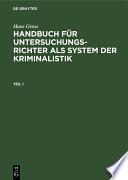
Hans Gross: Handbuch für Untersuchungsrichter als System der Kriminalistik. Teil 1
Autor: Hans Gross
Número de Páginas: 660Keine ausführliche Beschreibung für "GROSS: HB. FÜR UNTERS. SYST. KRIM. T. 1 6A HUSK E-BOOK" verfügbar.

Keine ausführliche Beschreibung für "GROSS: HB. FÜR UNTERS. SYST. KRIM. T. 1 6A HUSK E-BOOK" verfügbar.
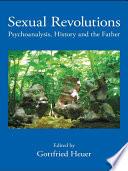
The ideas of psychoanalyst Otto Gross (1877 - 1920) have had a seminal influence on the development of the psychoanalytic discipline and yet his work has been largely overlooked. Sexual Revolutions introduces the work of Otto Gross to the academic and clinical fields of psychoanalysis and Jungian Analysis.
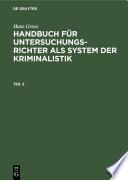
Keine ausführliche Beschreibung für "GROSS: HB. F. UNTERS. SYST. D. KRIM.T. 2 6A E-BOOK" verfügbar.
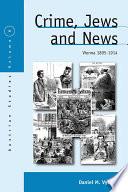
Crimes committed by Jews, especially ritual murders, have long been favorite targets in the antisemitic press. This book investigates popular and scientific conceptualizations of criminals current in Austria and Germany at the turn of the last century and compares these to those in the contemporary antisemitic discourse. It challenges received historiographic assumptions about the centrality of criminal bodies and psyches in late nineteenth- and early twentieth-century criminology and argues that contemporary antisemitic narratives constructed Jewish criminality not as a biologico-racial defect, but rather as a coolly manipulative force that aimed at the deliberate destruction of the basis of society itself. Through the lens of criminality this book provides new insight into the spread and nature of antisemitism in Austria-Hungary around 1900. The book also provides a re-evaluation of the phenomenon of modern Ritual Murder Trials by placing them into the context of wider narratives of Jewish crime.
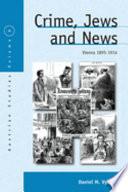
Examines the discourse in the press on Jewish crime at the turn of the 19th century - in an epoch when criminal and court-room reports became very popular and attracted a wide audience. The period 1895-1914 was marked by the development of criminal science, which attempted to find psychological and physical abnormalities identifying the "born" criminal, and by a rise in racist antisemitism. Theories of a Jewish propensity to crime were circulated. Remarkably, racial antisemitism affected the press accounts on Jewish criminals, or Jewish "accomplices" (defense attorneys, etc.) of non-Jewish criminals, only to a small degree. Of all the antisemitic narratives on Jewish criminality, the antisemitic press used mainly the image of the Jew as a rational and cunning criminal actor, coolly acting out a crime that was collective and conspiratorial in nature. Even when reporting on sexual crimes and "white slave trafficking", the papers never stressed sexual motives of Jewish defendants but only their callous greed. Dwells on the ritual murder trial of Hilsner in Bohemia, and shows the extent to which the perception of this case and even the course of the trial were affected by the press....
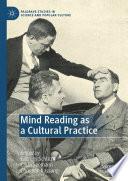
This book provides a genealogical perspective on various forms of mind reading in different settings. We understand mind reading in a broad sense as the twentieth-century attempt to generate knowledge of what people held in their minds – with a focus on scientifically-based governmental practices. This volume considers the techniques of mind reading within a wider perspective of discussions about technological innovation within neuroscience, the juridical system, “occult” practices and discourses within the wider field of parapsychology and magical beliefs. The authors address the practice of, and discourses on, mind reading as they form part of the consolidation of modern governmental techniques. The collected contributions explore the question of how these techniques have been epistemically formed, institutionalized, practiced, discussed, and how they have been used to shape forms of subjectivities – collectively through human consciousness or individually through the criminal, deviant, or spiritual subject. The first part of this book focuses on the technologies and media of mind reading, while the second part addresses practices of mind reading as they have been used...
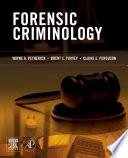
Forensic Criminology gives students of criminology and criminal justice an introduction to the forensic realm and the applied forensic issues they will face when working cases within the justice system. It effectively bridges the theoretical world of social criminology with the applied world of the criminal justice system. While most of the competing textbooks on criminology adequately address the application and the social theory to the criminal justice system, the vast majority do not include casework or real-world issues that criminologists face. This book focuses on navigating casework in forensic contexts by case-working criminologists, rather than broad social theory. It also allows criminology/criminal justice instructors outside of the forensic sciences the ability to develop and instruct a core course that might otherwise be considered beyond their expertise, or in conflict with forensic courses taught in chemistry, biology, or medical programs at their institutions because of its focus on criminology and criminal justice careers. With its practical approach, this textbook is well-suited for forensic criminology subjects being taught and developed in law, criminology, and ...
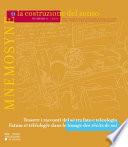
Mnemosyne, o la costruzione del senso est dédiée à l'étude des témoignages autobiographiques, dont elle a pour but d'analyser les expressions et la rhétorique. L'Osservatorio scientifico della memoria scritta, orale, filmica e del patrimonio autobiografico, groupe international et interdisciplinaire, est le moteur de cette publication annuelle à laquelle contribuent des historiens, des linguistes, des narratologues et des littéraires, des anthropologues et des spécialistes des médias. Les sujets abordés sont les arts de la scène, le récit et la correspondance, le patrimoine matériel, les savoir-faire. Revue publiée avec l’aide financière du Fonds national de la recherche scientifique (Belgique).

An examination of the enormous changes in Chinese society in the first half of the 20th century through the lens of the Chinese prison system. More than a simple history of prison rules or penal administration, the text offers a social and cultural analysis of the Chinese prison system that explores the profound effects and lasting repercussions of superimposing Western-derived models of repentance and rehabilitation on traditional categories of crime and punishment.
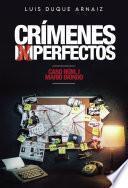
Cuando la investigación criminalística de un “caso frio” pone de manifiesto que se partió de un diagnóstico erróneo, de un escenario preparado, y, en consecuencia, un homicidio que nunca ha sido oficialmente investigado en España.
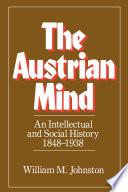
Part One of this book shows how bureaucracy sustained the Habsburg Empire while inciting economists, legal theorists, and socialists to urge reform. Part Two examines how Vienna's coffeehouses, theaters, and concert halls stimulated creativity together with complacency. Part Three explores the fin-de-siecle world view known as Viennese Impressionism. Interacting with positivistic science, this reverence for the ephemeral inspired such pioneers ad Mach, Wittgenstein, Buber, and Freud. Part Four describes the vision of an ordered cosmos which flourished among Germans in Bohemia. Their philosophers cultivated a Leibnizian faith whose eventual collapse haunted Kafka and Mahler. Part Five explains how in Hungary wishful thinking reinforced a political activism rare elsewhere in Habsburg domains. Engage intellectuals like Lukacs and Mannheim systematized the sociology of knowledge, while two other Hungarians, Herzel and Nordau, initiated political Zionism. Part Six investigates certain attributes that have permeated Austrian thought, such as hostility to technology and delight in polar opposites. Part One of this book shows how bureaucracy sustained the Habsburg Empire while inciting...
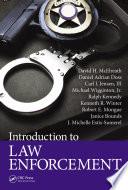
Modern perspectives of law enforcement are both complex and diverse. They integrate management and statistical analysis functions, public and business administration functions, and applications of psychology, natural science, physical fitness, and marksmanship. They also assimilate theories of education, organizational behavior, economics, law and

Focused on Behavioral Evidence Analysis (BEA), a method of criminal profiling developed and refined by the author over the past 15 years, the fourth edition of Criminal Profiling maintains the same core foundation that made previous editions best sellers in the professional and academic community worldwide. Written from practicing behavioral analysts and aspiring students alike, this work emphasizes an honest understanding of crime and criminals. Newly updated, mechanisms for the examination and classification of both victim and offender behavior have been improved. In addition to refined approaches towards victimology, crime scene analysis, motivation and case linkage, a chapter on sexual deviance has been added as well. With prior edition in wide use as a primary text in criminal justice, law, criminology, and behavioral science programs around the world, Criminal Profiling, Fourth Edition remains essential for students and professionals alike. - Outlines the scientific principles and practice standards of BEA-oriented criminal profiling, with an emphasis on applying theory to real cases - Contributing authors from law enforcement, academic, mental health and forensic science...
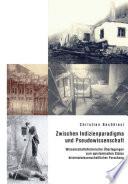
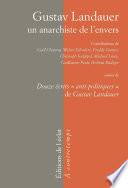
Le socialisme libertaire de Gustav Landauer continue d'interroger la pensée libertaire et ne parvient pas à s'intégrer dans un modèle parfaitement cadré, si bien qu'il pourrait finalement offrir le meilleur exemple d'une pensée libre, ouverte et non dogmatique. Journaliste, activiste politique, commissaire à l'instruction dans l'éphémère républiques des Conseils de Munich en 1919 avant d'être assassiné par la milice bavaroise, ce volume qui présente un ensemble inédit de ses articles «anti-politiques» accompagné de plusieurs études de spécialistes français et allemands qui nous font découvrir les différentes implications de Landauer dans le mouvement coopératif, les communes libres ou la conception d'un sionisme révolutionnaire qui donnera naissance au mouvement des kibboutz. Gustav Landauer (1870-1919) est l'auteur d'une oeuvre importante et disparate, comprenant des romans, des pièces de théâtre et un grand nombre d'articles et d'essais philosophiques et politiques, où il développe une pensée originale inspirée par Kropotkine. À l'origine du mouvement des communautés et fidèle ami de Martin Buber, il défend la thèse d'un dépassement...
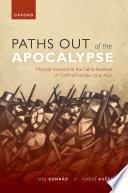
Paths out of the Apocalypse uses violence as a prism through which to investigate the profound social, cultural, and political changes experienced by (post-) Habsburg Central Europe during and immediately after the Great War. It compares attitudes toward, and experiences and practices of, physical violence in the mostly Czech-speaking territories of Bohemia and Moravia, the German-speaking territories that would constitute the Republic of Austria after 1918, and the mostly German-speaking region of South Tyrol. Based on research in national and local archives and copious secondary literature, the study argues that, in the context of total war, physical violence became a predominant means of conceptualizing and expressing social-political demands as well as a means of demarcating various notions of community and belonging. The authors apply an interdisciplinary understanding of violence informed by sociological and psychological theories as well as by rigorous empirical historiographical approach. First, they examine the most severe kind of physical violence - murder - against the backdrop of shifting scientific and media discourses during the war and its immediate aftermath....
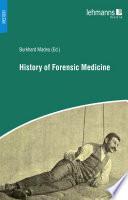
Forensic Medicine is an old medical discipline defined as “that science, which teaches the application of every branch of medical knowledge to the purpose of the law” (Alfred Swaine Taylor). Forensic Medicine deals with medical evidence not only in practice but also in research and furthermore all legal essentials in health care especially for doctors are part of teaching, training and research. Several steps in the development of Forensic Medicine can be distinguished: At first the use of medical knowledge for legal and public purposes.Secondly the compulsory medical testimony for the guidance of judges.Thirdly the professionalization as an own academic discipline. The development and existence of a speciality of Forensic Medicine depends essentially on two factors: on a sufficiently high development of the law and on a sufficiently high development of medicine. The period of professionalization of Forensic Medicine as an own academic discipline started in the 19th century, especially in Paris, Vienna, London, Edinburgh, Berlin. Since than the world has changed dramatically and we are now witnesses of a rapid, deep-rooted social cultural, legal and technological...
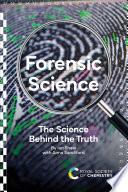
Forensic science is often important in criminal cases, so criminal justice professionals, including lawyers and forensic scene investigators, must have a basic understanding of what is often complex science. This book explains the science underpinning forensic techniques to give those who engage with forensic science professionally, but who are not primarily scientists, a level of understanding that will enable them to use forensic science data effectively. In addition, the book places the use of forensic data in the context of criminal cases to assess the reliability and usefulness of forensic data in court. Succinctly presented, this book covers all the facets of forensic science for students who are hoping to become police officers, lawyers or other members of the criminal justice system. As forensic investigations have advanced, e.g. in DNA profiling, computer modelling and behavioural sciences, so has the need for an increase in the level of scientific knowledge. The author understands the challenges this brings and has written the book to explain complex information in an accessible and undemanding style. Using international case studies, this book will bring forensic...
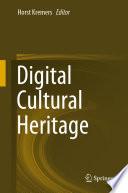
This book provides an overview of various application spheres and supports further innovations needed in information management and in the processes of knowledge generation. The professions, organizations and scientific associations involved are unusually challenged by the complexity of the data situation. Cartography has always been the central field of application for georeferencing digital cultural heritage (DCH) objects. It is particularly important in enabling spatial relation analysis between any number of DCH objects or of their granular details. In addition to the pure geometric aspects, the cognitive relations that lead to knowledge representation and derivation of innovative use processes are also of increasing importance. Further, there is a societal demand for spatial reference and analytics (e.g. the extensive use of cognitive concepts of "map" and "atlas" for a variety of social topics in the media). There is a huge geometrical-logical-cognitive potential for complex, multimedia, digital-cultural-heritage databases and stakeholders expect handling, transmission and processing operations with guaranteed long-term availability for all other stakeholders. In the future, ...
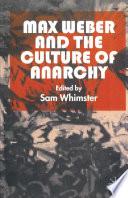
This is a specially commissioned set of essays on the themes of Max Weber, culture, anarchy and politics. It presents the first complete publication (in both English and German) of a series of letters written by Max Weber in 1913 and 1914 during his stays at the anarchist settlement of Ascona. The letters show Weber debating with the issues of free love, eroticism, patriarchy, anarchism, terrorism, pacifism, political and personal convictions and power. These themes are taken up by the contributors in a wider discussion of the relation of culture and politics.
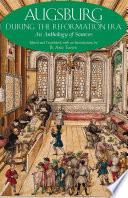
Sixteenth-century Augsburg comes to life in this beautifully chosen and elegantly translated selection of original documents. Ranging across the whole panoply of social activity from the legislative reformation to work, recreation, and family life, these extracts make plain the subtle system of checks and balances, violence, and self-regulation that brought order and vibrancy to a sophisticated city community. Most of all we hear sixteenth-century people speak: in their petitions and complaints, their nervous responses under interrogation, their rage and laughter. Tlusty has done an invaluable service in crafting a collection that should be an indispensable part of the teaching syllabus. --Andrew Pettegree, University of St. Andrews
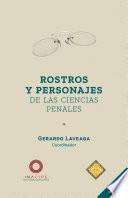
Marco Tulio Cicerón - Ambroise Paré - Edward Coke -Thomas Hobbes - Montesquieu -Cesare Beccaria - Jeremy Bentham - Elizabeth Fry - Manuel Montesinos y Molina -Francesco Carrara - Rudolf von Ihering - Concepción Arenal - Cesare Lombroso - Hans Gross Eliseo - Franz von Liszt - Raffaele Garofalo - Alphonse Bertillon - Enrico Ferri - Clarence Darrow - Juan - Pedro Dorado Montero - Ernst von Beling - Carlos Roumagnac - Constancio Bernaldo de Quirós - Gustav Radbruch - Hans von Hentig - Hans Welzel - Mariano Jiménez Huerta - Roman Rudenko - Herbert Lionel Adolphus Hart - Juan del Rosal Fernández - Alfonso Quiroz Cuarón - Marino Barbero Santos -Francisco Tomás y Valiente - William Stewart Young - Claus Roxin - Santiago Mir - Alec Jeffreys
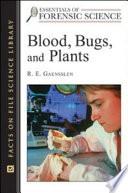
Explores several core biological areas that have influenced modern forensic science. This book includes a 'blood' section that covers the identification of blood and body fluids, DNA typing, and blood-spatter patterns. Each chapter provides an overview that briefly introduces readers to basic concepts in forensic science.
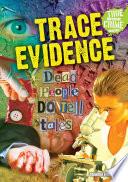
Footprints...fingerprints...clothing fibers...hair. Wherever we go, we leave some evidence, or pick some up and take it with us. For this reason, detectives and forensic scientists have been using trace evidence to catch criminals for more than a hundred years. Readers find out the techniques scientists use to collect and analyze evidence with these fascinating stories about how trace evidence helped solve crimes.
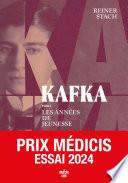
Le dernier tome de la monumentale biographie de Reiner Stach : les années de jeunesse et de formation, ou comment Franz devient Kafka. Conclusion de la vaste enquête biographique de Reiner Stach, ce troisième tome est consacré aux années 1883 à 1911, de la naissance de Kafka à la veille de sa grande percée créatrice. Années d'enfance et de silence, années de balbutiements, de premières tentatives littéraires et de lente maturation. Autant qu'un récit de formation, ce volume est le portrait d'une ville et d'une époque. La ville : Prague, avec son conflit historique de plus en plus brûlant entre Allemands et Tchèques, qui place les Juifs entre le marteau et l'enclume. L'époque : le tournant du xxe siècle, où la montée des conflits sociaux, des idéologies et de l'antisémitisme, les bouleversements intellectuels, scientifiques et technologiques font peu à peu tomber les structures sociales anciennes. C'est au milieu de ces ruptures que naît et grandit Franz Kafka, enfant isolé pris entre le conflit avec son père et la pression de l'autorité scolaire. Il trouve bientôt dans l'écriture une échappatoire qui, à terme, le ramènera au monde et lui permettra...
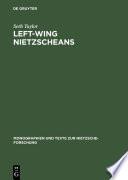
Friedrich Nietzsche has emerged as one of the most important and influential modern philosophers. For several decades, the book series Monographien und Texte zur Nietzsche-Forschung (MTNF) has set the agenda in a rapidly growing and changing field of Nietzsche scholarship. The scope of the series is interdisciplinary and international in orientation reflects the entire spectrum of research on Nietzsche, from philosophy to literary studies and political theory. The series publishes monographs and edited volumes that undergo a strict peer-review process. The book series is led by an international team of editors, whose work represents the full range of current Nietzsche scholarship.
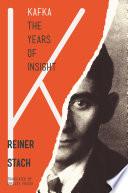
Telling the story of Kafka's final years as never before—the third volume in the acclaimed definitive biography This volume of Reiner Stach's acclaimed and definitive biography of Franz Kafka tells the story of the final years of the writer's life, from 1916 to 1924—a period during which the world Kafka had known came to an end. Stach's riveting narrative, which reflects the latest findings about Kafka's life and works, draws readers in with nearly cinematic precision, zooming in for extreme close-ups of Kafka's personal life, then pulling back for panoramic shots of a wider world blighted by World War I, disease, and inflation. In these years, Kafka was spared military service at the front, yet his work as a civil servant brought him into chilling proximity with its grim realities. He was witness to unspeakable misery, lost the financial security he had been counting on to lead the life of a writer, and remained captive for years in his hometown of Prague. The outbreak of tuberculosis and the collapse of the Austro-Hungarian Empire constituted a double shock for Kafka, and made him agonizingly aware of his increasing rootlessness. He began to pose broader existential...
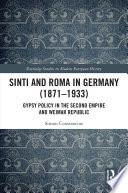
This book concerns the persecution of the Sinti and Roma in Germany during the Second Empire (1871–1918) and Weimar Republic (1919–1933). It traces the ways in which discriminatory treatment towards 'Gypsies' developed in a state ostensibly committed to individual liberty and equal treatment under the law, and how government policies in this period furthered their economic marginalisation and social exclusion. It will provide much-needed detail on a crucial period, one which is ordinarily addressed only fleetingly, and by way of introduction, to studies of how the Sinti and Roma communities were treated by National Socialists.

The authors tell the engrossing history of how, in the first half of the twentieth century, novel routines, regulations, and techniques--from chain-of-custody procedures to the analysis of hair, blood, and fiber--fundamentally transformed the processing of murder scenes. Focusing on two iconic English investigations--the 1924 case of Emily Kaye, who was beaten and dismembered by her lover at a lonely beachfront holiday cottage, and the 1953 investigation into John Christie's serial murders in his dingy terraced home in London's West End--Burney and Pemberton chart the emergence of the crime scene as a new space of forensic activity.
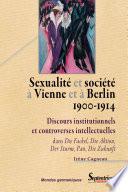
Au tournant du XXe siècle, à Vienne et à Berlin, la sexualité est l'objet de discours multiples, discours déjà établis et soumis à des normes religieuses, médicales et juridiques, ou discours en pleine effervescence, en lien étroit avec le progrès scientifique, l'essor urbain et les mutations socioculturelles. L'enjeu majeur de cet ouvrage...
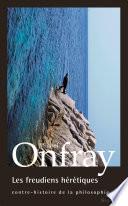
Le coup d'Etat effectué par Freud pour faire croire qu'il avait, seul, inventé la psychanalyse, a réussi. Il n'a d'ailleurs reculé devant rien pour que les choses en aillent ainsi... Il est parvenu à effacer le rôle du formidable intellectuel collectif qui, avec lui, mais aussi sans lui, malgré lui, voire contre lui, a inventé la discipline. Toute la psychanalyse non-freudienne a été vilipendée, salie, attaquée par Freud et les siens – sa fille Anna en première ligne. Or, il existe une psychanalyse de gauche qui récuse le schéma idéaliste freudien d'un inconscient psychique pensé comme un ectoplasme transmis de façon mystérieuse d'homme en homme depuis la période glaciaire. Cette psychanalyse de gauche pense l'inconscient comme un produit de l'histoire et des conditions d'existence concrètes des individus : l'inconscient des ouvriers, des pauvres, des employés, des chômeurs que Freud refuse de soigner, sous prétexte qu'ils jouissent du «bénéfice de la maladie», n'a pas grand-chose à voir avec l'inconscient de la riche bourgeoisie oisive qui se précipite chez Freud. Dans sa courte vie de libertin drogué, fantasque et suicidaire, Otto Gross invente...

An Introduction to Crime Scene Investigation, Fourth Edition is a comprehensive and accurate overview of the practical application of forensic science in crime scene investigation.
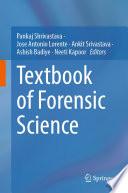
This textbook provides essential and fundamental information to modern forensics investigations. It discusses criminalistics and crime scene aspects, including investigation, management, collecting and packaging various types of physical evidence, forwarding, and chain of custody. It presents fundamental principles, ethics, challenges and criticism of forensic sciences and reviews the crime typologies, the correlates of crime, criminology, penology, and victimology. It provides a viewpoint on legal aspects, including types of evidence, the procedure in the court and scrutiny of the evidence and experts. The book summarizes forensic serological evidences such as blood, semen, saliva, milk-tears, sweat, vaginal fluids, urine, and sweat. It also provides an overview of forensic examination of different types of evidence and also includes comprehensive detailing of forensic ballistics including firearm classification, bullet comparison and matching. Further, it explores the examinations of drugs, chemicals, explosives, and petroleum products. It focuses on the various aspects of forensic toxicology, including the study of various poisons/toxins, associated signs and symptoms, a fatal...

The highly publicized O.J. Simpson trial helped spark an interest in the application of science to criminal investigations, leading to popular TV shows, books, and movies on the topic. Enrollment in forensic science educational programs soared, and new academic programs sprouted everywhere. Science versus Crime, Revised Edition provides an insider’s look at how crimes are solved with the help of forensic science. Offering students a peek at the many investigations that have revolutionized this field of study, this eBook explores the pioneers of forensic science, how evidence is collected and analyzed, the science of DNA, fingerprinting, and more. Written by a well-respected forensic scientist with extensive experience in this field, this fascinating volume covers the important cases and procedures that govern scientific evidence: testimony, admissibility hearings, and how the law and scientific evidence intersect in a courtroom. Science versus Crime, Revised Edition is an essential book for middle and high school students, providing them with a thorough understanding of what forensic science is and how it can assist in crime fighting. Chapters include: Forensic Science: In and...

La investigación de los delitos es fundamental para el sistema policial y la justicia penal. Con el uso de lo más avanzado de la ciencia y la técnica, la criminalística ha devenido herramienta indispensable para establecer la necesaria objetividad en la elaboración de dictámenes periciales, formulación de hipótesis y determinación de la autoría de un hecho delictivo. El presente texto responde a cincuenta interrogantes sobre el quehacer de esta especialidad en la búsqueda de las evidencias necesarias para determinar la autoría de un delito; también se incluye una breve reseña del desarrollo de esta ciencia en el mundo y los pioneros en esta rama del saber (entre los cuales están algunos cubanos notables) y, para finalizar, se hace referencia a casos famosos donde la criminalística desempeñó un importante papel para desentrañar la verdad de los hechos.
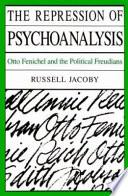
By examining the private correspondence of a circle of German psychoanalyst emigrés that included Otto Fenichel, Annie Reich, and Edith Jacobson, Russell Jacoby recaptures the radical zeal of classical analysis and the efforts of the Fenichel group to preserve psychoanalysis as a social and political theory, open to a broad range of intellectuals regardless of their medical background. In tracing this effort, he illuminates the repression by psychoanalysis of its own radical past and its transformation into a narrow medical technique. This book is of critical interest to the general reader as well as to psychoanalytic historians, theorists, and therapists.
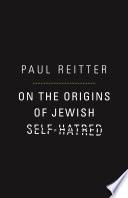
A new intellectual history that looks at "Jewish self-hatred" Today, the term "Jewish self-hatred" often denotes a treasonous brand of Jewish self-loathing, and is frequently used as a smear, such as when it is applied to politically moderate Jews who are critical of Israel. In On the Origins of Jewish Self-Hatred, Paul Reitter demonstrates that the concept of Jewish self-hatred once had decidedly positive connotations. He traces the genesis of the term to Anton Kuh, a Viennese-Jewish journalist who coined it in the aftermath of World War I, and shows how the German-Jewish philosopher Theodor Lessing came, in 1930, to write a book that popularized "Jewish self-hatred." Reitter contends that, as Kuh and Lessing used it, the concept of Jewish self-hatred described a complex and possibly redemptive way of being Jewish. Paradoxically, Jews could show the world how to get past the blight of self-hatred only by embracing their own, singularly advanced self-critical tendencies—their "Jewish self-hatred." Provocative and elegantly argued, On the Origins of Jewish Self-Hatred challenges widely held notions about the history and meaning of this idea, and explains why its history is so...
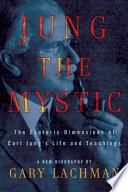
This bold, compact new biography of Carl Jung fills a gap in our understanding of the pioneering psychiatrist by focusing on the occult and mystical dimension of Jung's life and work, a critical but frequently misunderstood facet of his career. Although he is often called the "founding father of the New Age," Carl Jung, the legendary Swiss psychiatrist best known for his groundbreaking concepts like the collective unconscious, archetype theory, and synchronicity, often took pains to avoid any explicit association with mysticism or the occult. Yet Jung lived a life rich in paranormal experiences-arguing for the existence of poltergeists in a debate with Sigmund Freud, participating in séances, incorporating astrology into his therapeutic work, reporting a near death experience, and collaborating with the pioneering ESP researcher J. B. Rhine. It is these critical experiences-often fleetingly touched on in other biographies or critical studies, and just as frequently used to make a case against Jung and his philosophies-that form the core of this exciting new biography, Jung the Mystic. While Jung's ghostwritten memoirs, Memories, Dreams, Reflections, touch on the role his mystical ...
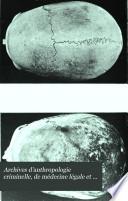
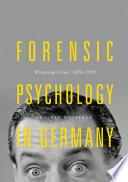
This book examines the emergence and early development of forensic psychology in Germany from the late nineteenth century until the outbreak of the Second World War, highlighting the field’s interdisciplinary beginnings and contested evolution. Initially envisaged as a psychology of all those involved in criminal proceedings, this new discipline promised to move away from an exclusive focus on the criminal to provide a holistic view of how human fallibility impacted upon criminal justice. As this book argues, however, by the inter-war period, forensic psychology had largely become a psychology of the witness; its focus narrowed by the exigencies of the courtroom. Utilising detailed studies of the 1896 Berchtold trial and the 1930 Frenzel trial, the book asks whether the tensions between psychiatry, psychology, forensic medicine, pedagogy and law over psychological expertise were present in courtroom practice and considers why a clear winner in the “battle for forensic psychology” had yet to emerge by 1939.
Opciones de Descarga